Diamond Color

Side by side comparison of different diamond color grades.
When it comes to choosing a diamond, color is one of the key characteristics that most consumers look at. In fact, there is a common misconception that diamonds with higher color grades display better brilliance and sparkle.
The truth is far from that.
In this section of Beyond4Cs, you will find out what diamond color is and what it isn’t. You are also going to discover the insights to saving money when buying an engagement ring and how to choose the best color grade based on your needs.
Let’s get started!
What is Diamond Color?
In nature, diamonds are found in almost every color and hue you can possibly imagine; grey, white, yellow, red, green, pink and brown. Contrary to popular belief, it is actually very rare to find a diamond that doesn’t have any color at all.
When it comes to grading color, GIA had devised a system of describing diamonds in the normal range with letters from D (colorless) to Z (light brown or yellow). If the intensity of color in a diamond is stronger than a Z, then the fancy color grading system is utilized instead.
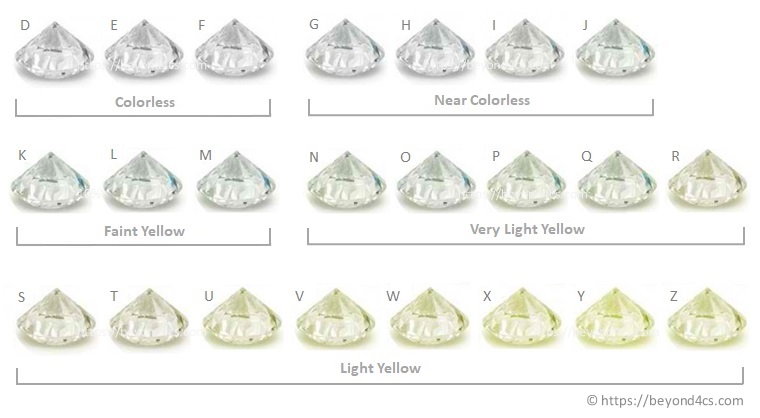
Diamond color scale chart depicting diamonds with ratings from D-Z.
How is Diamond Color Graded And Why It Matters?
Almost every diamond sold in the market today is rated using the GIA color scale, regardless of whether it is graded by the GIA or not.
During the grading process, the loose stone is flipped over by a trained gemologist and comparisons are made against a known set of masterstones. When the diamond is viewed faced down, the color differences will be the most obvious.

Notice that the color near the tip of the cone is more saturated and shows up easily?
Looking at the diamond in this manner also reduces the distractions caused by internal and surface reflecting facets. Finally, for accurate grading to take place, it is always done in a controlled environment with neutral lighting to ensure consistency.
In real life, the diamond is mounted face up in a setting and it would be extremely difficult for untrained eyes to pick up subtle differences in color. I will discuss this in detail on later pages and show you how to buy diamonds that face up white without breaking the bank.
Diamond Colors According to the Diamond Color Scale Chart
There are five main categories on the GIA diamond chart and color grades that range from completely colorless to lightly tinted. D color diamonds are extremely rare and the “whitest” grade that money can buy.
As you go down the color scale, the color tint becomes more noticeable. Let’s take a more indepth look at some of the most popular color categories you will come across when shopping for an engagement ring.
If you are interested in a particular color grade, feel free to click on the corresponding link to read a detailed write-up about the color rating.
Colorless Diamonds (D, E, and F)
The colorless category is made up of 3 grades: D, E and F.
To the naked eye, all 3 color grades appear icy-white and look identical. As a trained diamond grader with years of experience, even I cannot distinguish between a D or F color diamond outside of lab conditions.
Due to their white appearances, they are usually set in platinum or white gold instead of yellow gold or rose gold. This is because colored settings would reflect color and negate the diamond’s colorless effect.
Near Colorless Diamonds (G, H, I and J)
The near-colorless category is made up of 4 grades: G, H, I and J.
Near colorless diamonds contain traces of color in their body when they are viewed face down. Once the diamond is mounted on a ring setting, the faint hue is extremely difficult to detect for a layman.
Near colorless diamonds are the most popular range of selections when people shop for engagement rings because they are much more affordable and offer good value for money.
G-J diamonds are suitable for both platinum and white gold settings and face up white if they are well cut. They are also very versatile and can be paired with yellow gold or rose gold as well.
Faint Color Diamonds (K, L, and M)
The faint color category is made up of 3 grades: K, L and M.
Faint color diamonds show a hint of color that can be noticeable to the naked eye in the face-up position. For people who like a warmer appearance or want to buy an antique style ring, K-M diamonds offer fantastic value for money while complementing the appearance you are looking for.
K-M diamonds are usually used in vintage style settings and yellow gold ring designs. Due to their perceptible color tint, they cost significantly less compared to the price of a colorless diamond.
Why is Diamond Color an Important Consideration?
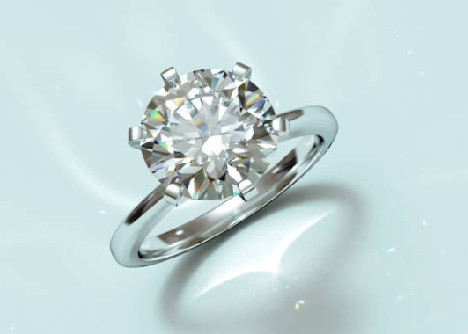
From a technical perspective, it comes down to the behavior and physics of light when it passes through different mediums. Colored diamonds (e.g. black, brown, gray) can negatively affect light absorption and in turn, affect the sparkle displayed by the diamond.
In lower colored diamonds like those found in the very light or light yellow category, the body tint of the diamond may change the “true color” of its brilliance and fire as light passes through it. This is a subtle effect and isn’t easily seen at higher color grades.
That is why white (colorless) diamonds are commonly used in jewelry as they have better reflective qualities compared to brown or dark-colored diamonds. Of course, the exceptions to this rule are the extremely rare and highly sought after colors of pink, red, blue and orange.
The other reason why diamond color matters when consumers shop for engagement rings is largely a psychological one.
In many societies, there is a stigma that lower colored diamonds are poor quality and “ugly”. In fact, paying a premium for colorless diamonds gives the recipient bragging rights and allows them to show off their societal status.
So, how should you choose a color for your diamond? Just how important is this factor when making an engagement ring purchase? Are there any preferred colors for specific jewelry applications? I know you probably have more questions in your mind now.
Keep on reading to find out more…
Related Articles
Leave A Comment

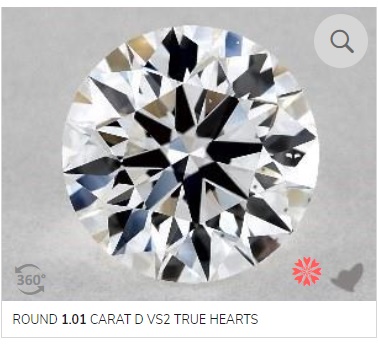
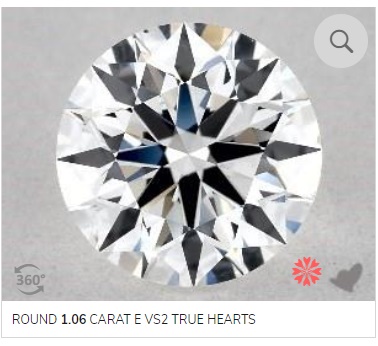
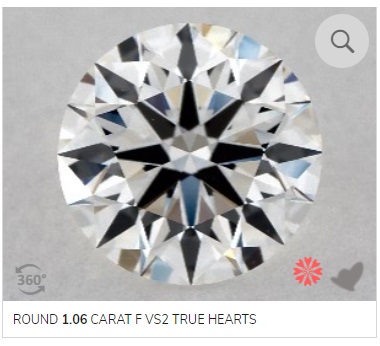
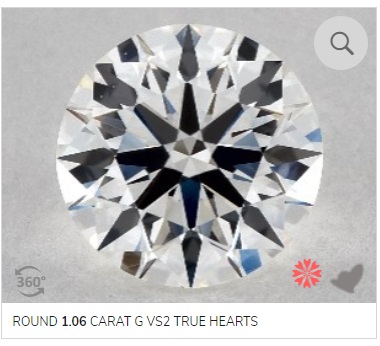
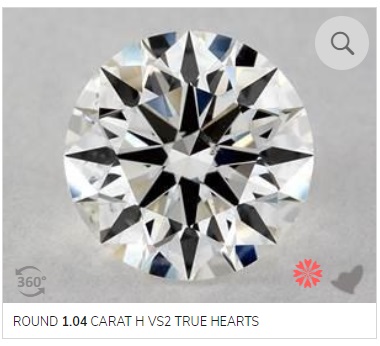
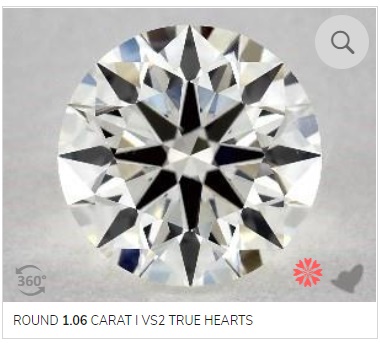
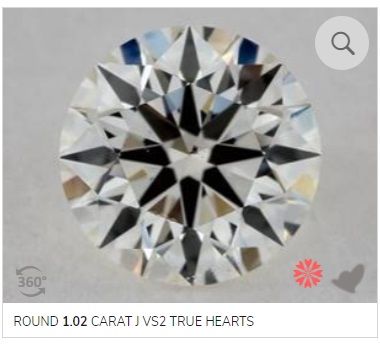
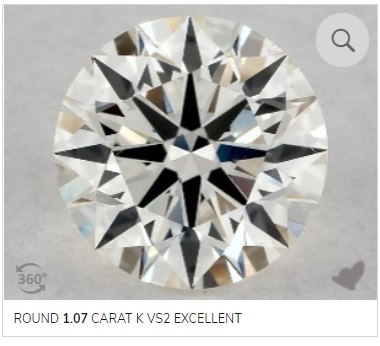
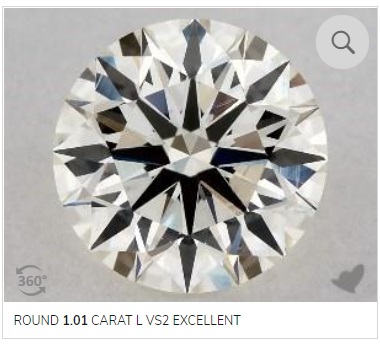
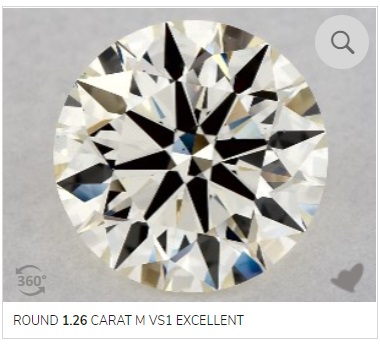
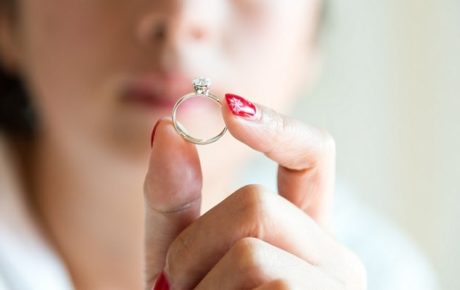
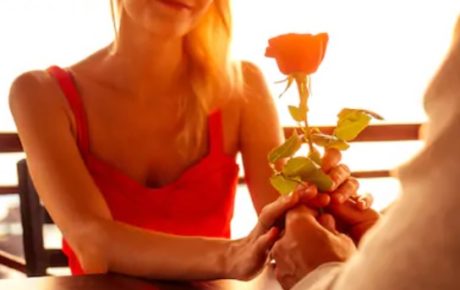
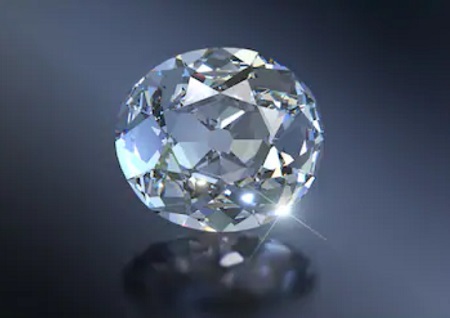
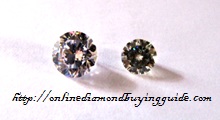









22 Comments
I recently inherited some diamonds from my grandmother and these are uncertified stones which I brought to a local appraiser. The size ranges from 1.20 carats emerald cut, 1.40 carats oval and a 2 carats round diamond. The appraisal come back which indicated the following:
1.20 carats emerald cut – Good Polish / Good Symmetry, P color – very light brown
1.40 carats oval cut – Good Polish / Poor Symmetry, W-X color – light yellow
2.03 carats round cut – Good Polish / Very Good Symmetry U color – light brown
I’m a little confused about the differences between brown and yellow. Also, is there a good way to sell them without getting scammed?
All naturally mined diamonds have tints of color to them. Green, yellow, pink, brown, blue etc… When the color grading is below K color, GIA indicates the hue of the color in their report. Generally speaking, brown hues are less “valuable” than yellow hues because of market forces. The best way to go about selling your diamonds would be to obtain reliable grading reports for each stone first.
Once you have those documents, look for a jeweler whom you can consign the stones to. That’s the easiest way to handle your current situation.
Is there a reason why a D colored diamond is so much more expensive for a F colored diamond? On the color chart, both are listed under the “colorless” category.
I’m considering a 2 carat diamond and the price differences I noticed in stones of similar clarity (VVS1), cut (both are GIA XXX). When I did my research, I found that the prices for smaller diamonds like 0.50 carats didn’t have such a big disparity in costs with a difference of 2 color grades.
When it comes to large sized diamonds, every increase in color, clarity grade will exponentially add to the diamond’s value. This is largely due to rarity reasons and that it is very hard to find them in nature. For smaller diamonds like 0.30 carats, you will realize that an IF diamond doesn’t cost a lot more than another diamond with VVS2 clarity. This is due to the relative abundance of them in nature.
If you want to have a better understanding of prices, this article might interest you: https://beyond4cs.com/diamond-prices/
I am pretty color adverse when it comes to diamonds. I can usually tell the difference between diamonds within the colorless range and I do not like anything that looks yellow. However, after reading through the florescence article on your website, I am considering a round J diamond with strong blue florescence. Is a J diamond going with strong blue going to appear yellow?
p.s. Why does color grading start at D instead of A?
It depends on the carat size of the stone. Bigger stones tend to show more body color. I would say yes, you are going to notice color at Js even if you are buying diamonds around the 0.50 carat range.
This is a trivia question that I get asked a lot in email exchanges with readers. Why does the GIA system start at the alphabet D and not A, B or any other letter for that matter?
You see, before GIA’s grading system was widely accepted by the trade, different jewelers would use “A”, “AA” or other weird nomenclatures to label their diamonds. As you could imagine, consistency was a nightmare and the terms used to depict a diamond were causing huge confusion at that point in time.
Based on what I heard from my GIA instructors, GIA decided to start their grading system with the letter D so that they won’t get associated with other systems already in the market.
As a jeweler, I tend to consider additional factors when recommending and choosing diamonds as the centerpiece. Although you’ve mentioned here that J color will show, I’d go as far as to say to a great extent that J-K diamonds will appear completely white when set in yellow gold and will be sufficient high quality for most, especially when with an excellent cut, clear stone.
With yellow gold settings, even a D would look slightly tinted as it picks up color from its surroundings. I would agree that matching a J/K stone with a yellow gold setting would be a practical choice for consumers.
Hello,
I’m actually looking for a for an engagement ring.
I stopped on 2 stones:
– 0.45C / IF / D / double excellent and very good polish
– 0.46C / IF / E / Triple excellent
Both have no fluorescence.
It will be mounted on a platinum ring
The first one is 10% more expensive.
So from your experience, which one would be the best.
Neither.
1) I wouldn’t pay for an IF diamond clarity in such a low carat sized stone.
2) Not without having further details, there’s no way to tell how well cut these diamonds are.
https://beyond4cs.com/grading/aset-reference-charts/
I see your point but the IF type diamonds is more as a symbol than just a fancy wish of mine.
More info below on the second from which I have a copy of the GIA certificate. This stone aim to be mounted on a Cartier Ballerine ring.
Depth:60.2%
Table: 57%
Crown angle: 32.0
Crown height: 13%
Pavilion angle:41.4
Pavilion depth:44%
Star length:50%
Lower half: 80%
Girdle: thin to medium faceted, 3%
Culet: none
Here is all I have.many thanks for your advices
Jovan
Poor stone. Deep pavilion + shallow crown angles are both turn offs. They will lead to a diamond with significant light leakage.
Hi~
I have a 1.36 carat round center diamond S1 (nothing noticeable to the naked eye), H color, very good cut, set in a halo setting (G-H color diamonds). I was in love with the diamond by itself but now that its set, the diamonds in the setting look super white and the center stone at times looks to have a yellow tint to it (very warm looking) depending on the lighting and surroundings. It addition, sometimes has a cloudy appearance at certain angles even after I just had it cleaned. I’m wondering if it would have been a better decision to go with a smaller stone and colorless vs a larger stone and near colorless with a halo setting?
I think cut is the major issue here. If the diamond isn’t well cut, it’s going to show alot of its body color. I would recommend at least a G or an F at such a large carat size.
Paul,
Thank you for the website! It is truly a great help. I’m looking to put this diamond:http://www.whiteflash.com/loose-diamonds/round-cut-loose-diamond-3738880.htm, on an 18k white gold solitaire band with no other diamonds. My concern is that the color is “I”. It seems like it is in the middle of the GIA color scale. Should I pay a few $300-$400 more for a similar diamond with an “H” color?
Thanks!
Below, you will see a simplified diamond color chart of the D-Z grading scale.
You are correct in saying that it is near the middle of the scale because most jewelers only carry diamonds between D-K and they don’t go beyond L. At such a big carat size, I would say that an I color would be slightly noticeable. If you can afford the small increase in budget, go for an upgrade in color.
Hello Paul,
big fan of your site. Just quick question – in your post above you mentioned “When the color grading is below K color, GIA indicates the hue of the color in their report” – I am having difficulty finding this information in GIA reports. Could you steer me in right direction, please? Where exactly in the report should i look for such information? Many thanks!
GIA no longer reports the color hue in their new report format (gold). You will only see this information in the older reports (blue).
Hi Paul, thanks for posting all this helpful information on your site. It definitely helped me picking out a ring for my hopefully-future fiance…question about comparing two diamonds…what are your thoughts on these two:
1) https://www.jamesallen.com/loose-diamonds/round-cut/1.07-carat-e-color-si2-clarity-excellent-cut-sku-3192637
2) https://www.jamesallen.com/loose-diamonds/round-cut/1.04-carat-e-color-si2-clarity-excellent-cut-sku-3114707
I went with #1 for a couple reasons…the grading was done by GIA (which you highly recommend), and it seems to be more eye-clean than #2. My girlfriend said she cares most about cut, color, and around 1 carat. Clarity is not as important to her. Both diamonds seem to be somewhat equal in those areas. #1 was more expensive by about $600, but that wasn’t an issue with me. Does anything else stick out to you when comparing these two? The GIA report for #1 says there is some cloudiness present, but I wasn’t able to detect it. Anything to note about the dimension differences? Thanks for your help!
The first stone has a red flag in clarity. The grade is assigned due to severe clouds and this may cause the diamond to look milky. As for the 2nd stone, the diamond isn’t eyeclean. Both of which aren’t good options. Given your budget restrictions, you may want to lower color ratings and choose a G color with slightly better clarity.
Hi, Paul.
Thank you very much for lots of information on buying diamonds.
I recently learned about this word “bgm diamonds.”
Apparently, it means diamonds with brown, green, or milky undertone (or hue or whatever else the correct word is) and GIA and AGS do not specify whether or not a diamond is bgm on its certificate.
My questions are
(1) How exactly is it possible that a bgm diamond and a non-bgm diamond can be given the same color grade?
(2) Are all Whiteflash diamonds and all Brian Gavin diamonds bgm free? They don’t seem to say anything about it on their websites. If they do, could you give a link?
Thank you in advance.
1) The BGM term is one that is given by the industry and everyone’s definition of it will be slightly varied. Diamonds are graded in the lab for color under neutral lighting for its SATURATION and regardless of the hue that the diamond has. For brown/yellow diamonds, GIA only includes the hue of the diamond in the grading report beyond the K color. That is where you will start to see GIA using descriptions like Faint Brown to describe color in the grading reports.
Milky diamonds can be a result of many things. The most common cause of milky diamonds are diamonds with low clarity grades below SI1 and have cloud inclusions as the clarity grade maker. This is actually very obvious when assessing a diamond using videos taken in a neutral environment.
2) White Flash and Brian Gavin filter their diamonds for these issues. You will NOT find any milky diamond within their in-house signature diamond collections. I know this for a fact because of the curation standards they apply to their stones.
https://www.whiteflash.com/a-cut-above-diamonds/specifications-and-qualifications?a_aid=recommended